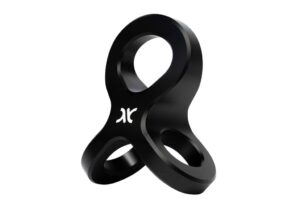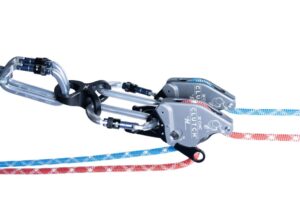Introducing the SQUID System
Introducing the Squid System for rope technicians, rescuers, and riggers, efficiency, safety, and precision; not-negotiable. So the SQUID system, a groundbreaking innovation that redefines the possibilities of twin tension rope systems (TTRS). Designed for professionals who demand the best, the SQUID system offers unparalleled functionality and performance. In this post, we explore how the SQUID system can revolutionize your rigging operations, from its innovative features to its real-world applications.
What Makes the SQUID System Unique?
The SQUID system combines simplicity and advanced engineering to streamline complex rigging tasks. Here’s how it stands apart:
- Innovative Design:
- Central anchoring point for redundancy.
- Two perpendicular lateral points for optimal alignment.
- Balanced load distribution reduces system failure risks.
- Twin Tension Efficiency:
- Perfect for dual-handle techniques like the DOUBLE CLUTCH.
- Enables single-operator control with precise tensioning on both ropes.
- Enhanced Safety:
- Reduces system shock and extension during line failure.
- Natural orientation towards the load prevents binding.
- CE-marked and NFPA-certified for General and Technical Use.
- Versatile Rigging Applications:
- Load-sharing systems, bridle harnesses, cross hauls, and more.
- Facilitates smooth hardware transitions and multi-device alignment.
- Lightweight Yet Strong:
- Aircraft-grade aluminum construction.
- Compact and easy to transport for field operations.
Applications of the SQUID System
Twin Tension Rope Systems (TTRS):
The SQUID system enhances TTRS by aligning devices efficiently, enabling mirrored dual-handle operations for safe and effective hauling or lowering. This setup minimizes personnel requirements and maximizes precision.
Rig Plate Functionality:
With its multi-planar attachment points, the SQUID system acts as a robust rig plate, allowing for quick anchor setup, connection organization, and seamless transitions. It’s indispensable for constructing complex anchor systems.
Load Sharing and Dynamic Operations:
Its design minimizes shifting and load extension during anchor movement or failure, making it ideal for directional impacts and dynamic rescues. Secondary attachment points support high-strength load sharing and versatile connection methods.
Certification Standards:
The SQUID meets NFPA and CE standards, ensuring compliance in high-stakes operations.
- General Use (MBS 45 KN): High-load applications.
- Technical Use (MBS 27.7 KN): Lightweight, dynamic operations.
Key Features at a Glance
- Multi-planar rigging plate with perpendicular attachment points.
- Supports a variety of connection methods for versatile rigging.
- Primary attachment point fits up to three carabiners (Technical Use).
- Secondary attachment points designed for seamless load sharing.
- Reduces shifting and binding during high-impact operations.
- Constructed from aircraft-grade aluminum for strength and durability.
Why Choose the SQUID System?
The SQUID system is more than a tool—it’s a transformative asset. It simplifies complex rigging, enhances safety, and ensures reliable performance in every scenario. Whether you’re managing a high-stakes rescue or handling industrial rigging, the SQUID system delivers confidence and capability.
Explore the SQUID System Today
Ready to upgrade your rigging operations? Visit Rescue Response Gear to discover the SQUID system and other cutting-edge rope rescue equipment. Equip yourself with the best and embrace innovation in every operation.
Peace on your Days
Lance












